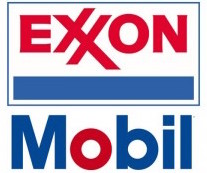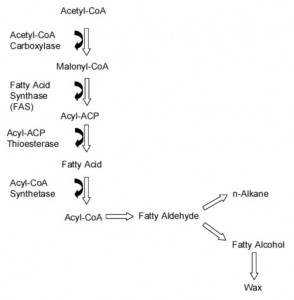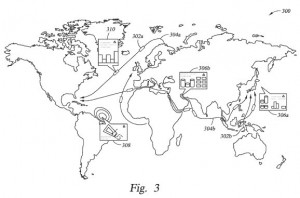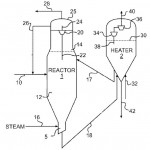 The Exxon Mobil Corporation (NYSE: XOM), also referred to as ExxonMobil, is headquartered in Irving, TX, and focuses on the production of oil and gas for energy generation and chemical development. In its annual energy outlook published in December, this corporation forecasts that there will be a 35 percent increase in global energy demand, especially for oil, by the year 2040. Near the beginning of January of this year, ExxonMobil fell to 2nd place in terms of crude oil production worldwide behind Brazil-based Petrobras; the two companies produced 2.065 million barrels and 2.209 million barrels respectively during the third quarter of 2014. Despite this, ExxonMobil stock continues to trade at high levels, especially after the company’s announcement of the procuring of exploration rights in the deep waters of the Flemish Pass off the coast of Newfoundland, Canada.
The Exxon Mobil Corporation (NYSE: XOM), also referred to as ExxonMobil, is headquartered in Irving, TX, and focuses on the production of oil and gas for energy generation and chemical development. In its annual energy outlook published in December, this corporation forecasts that there will be a 35 percent increase in global energy demand, especially for oil, by the year 2040. Near the beginning of January of this year, ExxonMobil fell to 2nd place in terms of crude oil production worldwide behind Brazil-based Petrobras; the two companies produced 2.065 million barrels and 2.209 million barrels respectively during the third quarter of 2014. Despite this, ExxonMobil stock continues to trade at high levels, especially after the company’s announcement of the procuring of exploration rights in the deep waters of the Flemish Pass off the coast of Newfoundland, Canada.
The Companies We Follow series checks in with this petroleum production giant for the first time and we found some very intriguing systems for improving the value of liquefied natural gas portfolios reflected in some patent applications filed with the U.S. Patent and Trademark Office. We explore some patent applications in chemical engineering fields, including one technology for introducing more flexibility into PVC products. Another patent application discusses underground processes involving the production of hydrocarbons in caverns.
The patent portfolio of ExxonMobil made some intriguing leaps forward in terms of synthetic lubricant technologies with a couple of patents granted to protect various substances utilizing poly-alpha-olefins. Another couple of patents deal with increased efficiencies for capitalizing on underwater or remote sources of natural gas and hydrocarbons to improve the monetization of those materials. We also explore a patent protecting an intriguing development in the field of genetically modified organisms for the enhanced production of biofuels.
[Companies-1]
Issued Patents of Note: Offshore Drilling, Monetization of Remote Gas Resources and Synthetic Lubricants
ExxonMobil’s investment into research and development activities have afforded it some success in the world of U.S. patents. Throughout 2013, the latest year for which we have records, ExxonMobil placed 97th worldwide in terms of patents issued by the USPTO with 383 patent grants that year, an increase of almost 25 percent since 2012. A patent in the field of synthetic lubricating oils assigned to researchers working with ExxonMobil earned that team of scientists a 2014 Thomas Edison Patent Award from the Research & Development Council of New Jersey.
Synthetic lubricants are also discussed by a couple of other patents which have been issued to ExxonMobil in the past few months. An improvement to the process economics for the production of low viscosity poly-alpha-olefin (PAO) for lubricants are discussed within U.S. Patent No. 8865959, issued under the title Process for Synthetic Lubricant Production. The patent claims a process to produce PAO by contacting one or more C4 to C24 alpha olefin monomers with a metallocene compound to produce a low molecular weight PAO and contacting a portion of that PAO with a Lewis acid catalyst and, optionally, one more more C4 to C24 alpha olefin monomers to produce a liquid PAO. The light olefin by-products created by the metallocene oligomerization process are able to be used to produce lube base stocks with better lube properties. The use of PAOs in lube base stock is also disclosed by U.S. Patent No. 8921291, which is titled Lubricants from Mixed Alpha-Olefin Feeds. The process claimed by this patent involves contacting an activated bridged racemic metallocene compound, a non-coordinating anion activator, a co-activator and a monomer feed comprised of at least two different linear alpha-olefin monomers; these are contacted under conditions suitable to produce an isotactic poly-alpha-olefin. The innovation results in a process for producing PAOs, especially high viscosity index PAOs, by contacting a mixed feed of linear alpha-olefins with an activated metallocene catalyst.
 Enhanced processes for deepwater production of hydrocarbons from underwater reservoirs, which require offshore drilling techniques, is disclosed and protected by U.S. Patent No. 8919445, which is titled Method and System for Flow Assurance Management in Subsea Single Production Flowline. The method of managing hydrates in a subsea production system involves storing a pig, here an oblong mass of metal, in a subsea production system in such a way that the pig can be moved by a displacement fluid in order to displace production fluids from a production cluster towards a location proximate to a heated portion within a single production line. The system of hydrate management possible through this invention reduces the cost-prohibitive nature of small installations of two-production-line subsea production configurations. The utilization of natural gas from geographically isolated sources is addressed by the technology expressed within U.S. Patent No. 8865100, entitled Monetizing Remote Gas Using High Energy Materials. The invention is designed to increase the economic incentive of treating natural gas by increasing the transportation and conversion efficiencies of significant gas stores which are stranded from gas markets or pipeline infrastructure. The patent claims a method of monetizing energy by transporting a high energy density material created from the reduction of a material oxide through a stranded natural gas reduction process to an energy market from a process location.
Enhanced processes for deepwater production of hydrocarbons from underwater reservoirs, which require offshore drilling techniques, is disclosed and protected by U.S. Patent No. 8919445, which is titled Method and System for Flow Assurance Management in Subsea Single Production Flowline. The method of managing hydrates in a subsea production system involves storing a pig, here an oblong mass of metal, in a subsea production system in such a way that the pig can be moved by a displacement fluid in order to displace production fluids from a production cluster towards a location proximate to a heated portion within a single production line. The system of hydrate management possible through this invention reduces the cost-prohibitive nature of small installations of two-production-line subsea production configurations. The utilization of natural gas from geographically isolated sources is addressed by the technology expressed within U.S. Patent No. 8865100, entitled Monetizing Remote Gas Using High Energy Materials. The invention is designed to increase the economic incentive of treating natural gas by increasing the transportation and conversion efficiencies of significant gas stores which are stranded from gas markets or pipeline infrastructure. The patent claims a method of monetizing energy by transporting a high energy density material created from the reduction of a material oxide through a stranded natural gas reduction process to an energy market from a process location.
The ‘766 patent application listed above is not the only ExxonMobil technology in the field of producing phenol from cyclohexane. U.S. Patent No. 8884068, issued under the title Phenol and Cyclohexane Mixtures, is directed at a method of producing phenol from cyclohexylbenzene that achieves cost efficiency by reducing the number of contaminants created by the production process which must be separated from the final product. The patent protects a mixture comprising up to 30 percent by weight of phenol, up to 30 percent by weight of cyclohexane and a complexation product, a salt of sodium sulfate in this case, comprising the remainder of the mixture.
 We’ll close our look at ExxonMobil’s patents with a look at one which shows that this corporation is also busy in the development of genetically modified organisms, or GMOs. U.S. Patent No. 8846370, titled Genetically Engineered Microorganisms Comprising 4-Hydroxybenzoyl-Coa Thioesterases and Methods of Using the Same for Producing Free Fatty Acids and Fatty Acid Derivatives, protects a GMO which is designed for increased fatty acid synthesis to create more effective biofuels from cyanobacteria and microalgae. This patent claims a microorganism containing a recombinant nucleic acid molecule encoding a 4-hydroxybenzoyl-coa thioesterase that hydrolyzes an acyl-acyl carrier protein to produce free fatty acids and fatty acid derivatives, especially free fatty acids with an acyl chain length ranging from 12 carbons to 16 carbons.
We’ll close our look at ExxonMobil’s patents with a look at one which shows that this corporation is also busy in the development of genetically modified organisms, or GMOs. U.S. Patent No. 8846370, titled Genetically Engineered Microorganisms Comprising 4-Hydroxybenzoyl-Coa Thioesterases and Methods of Using the Same for Producing Free Fatty Acids and Fatty Acid Derivatives, protects a GMO which is designed for increased fatty acid synthesis to create more effective biofuels from cyanobacteria and microalgae. This patent claims a microorganism containing a recombinant nucleic acid molecule encoding a 4-hydroxybenzoyl-coa thioesterase that hydrolyzes an acyl-acyl carrier protein to produce free fatty acids and fatty acid derivatives, especially free fatty acids with an acyl chain length ranging from 12 carbons to 16 carbons.
[Companies-2]
ExxonMobil’s Patent Applications: From Liquefied Natural Gas Shipping Optimization to Plasticizer Production
Closely associated with the refinement of oil for the production of fuels, ExxonMobil is involved with a wide array of innovation in the development of energy. Oil production from the Canadian oil sands has been an area of media focus in recent years and is targeted by this company through its affiliation with Imperial Oil, a Canadian petroleum company which has invested $100 million into oil sands development activities. ExxonMobil itself has pledged to invest $25 million over five years into the MIT Energy Initiative, a program supported by the research university focused on developing improved energy systems and clean energy technologies. The corporation also benefits from subsidiaries developing technologies in fields outside of energy infrastructures, such as ExxonMobil Chemical, which specializes in the development of polymers for plastics and films.
 A couple of patent applications that we discovered during our recent survey showed us evidence of a large focus on systems that optimize liquefied natural gas production operations. An enhanced system for planning the shipping of liquefied natural gas so as to optimize the profitability of a liquefied natural gas portfolio is discussed within U.S. Patent Application No. 20140310049, which is titled Method of Generating an Optimized Ship Schedule to Deliver Liquefied Natural Gas. The patent application claims a system for generating an optimized ship schedule to deliver liquefied natural gas (LNG) from one or more LNG liquefaction terminals to one or more LNG regasification terminals using a fleet of ships; the system analyzes a plurality of optimization models for an LNG supply chain that takes uncertainties, such as weather conditions or market conditions, into account. Optimizing the profitability of LNG portfolios is also at the center of U.S. Patent Application No. 20140344000, titled Systems and Methods for Valuation and Validation of Options and Opportunities in Planning and Operations for a Liquefied Natural Gas Project or Portfolio of Projects. This patent application would protect a computer-based common LNG supply chain optimization platform that generates an LNG supply chain design, models a simulation of LNG shipping using a fleet of ships and develops models for a long-term strategy for allocating LNG supplies while adhering to shipping capacity limitations. This system of opportunity planning and management aims to take advantage of a growing trend towards flexibility and short-term sales in the global LNG market.
A couple of patent applications that we discovered during our recent survey showed us evidence of a large focus on systems that optimize liquefied natural gas production operations. An enhanced system for planning the shipping of liquefied natural gas so as to optimize the profitability of a liquefied natural gas portfolio is discussed within U.S. Patent Application No. 20140310049, which is titled Method of Generating an Optimized Ship Schedule to Deliver Liquefied Natural Gas. The patent application claims a system for generating an optimized ship schedule to deliver liquefied natural gas (LNG) from one or more LNG liquefaction terminals to one or more LNG regasification terminals using a fleet of ships; the system analyzes a plurality of optimization models for an LNG supply chain that takes uncertainties, such as weather conditions or market conditions, into account. Optimizing the profitability of LNG portfolios is also at the center of U.S. Patent Application No. 20140344000, titled Systems and Methods for Valuation and Validation of Options and Opportunities in Planning and Operations for a Liquefied Natural Gas Project or Portfolio of Projects. This patent application would protect a computer-based common LNG supply chain optimization platform that generates an LNG supply chain design, models a simulation of LNG shipping using a fleet of ships and develops models for a long-term strategy for allocating LNG supplies while adhering to shipping capacity limitations. This system of opportunity planning and management aims to take advantage of a growing trend towards flexibility and short-term sales in the global LNG market.
The management of petrochemical refineries that develop gasoline, diesel and other products from crude oil is described by U.S. Patent Application No. 20140379112, which is titled Modeling Tool for Planning the Operation of Refineries. The method for operating a production facility claimed here involves the construction of a mathematical model of the facility, including the representation of at least one production entity having a set of equations that model the production entity’s behavior, solving the mathematical model to obtain solution results for the production entity and using those results to determine an operational plan for the facility. This system for developing a production schedule at a refinery takes into account raw material selection and transportation scheduling in a way that reduces capital costs.
We noted a couple of ExxonMobil Chemical patent applications filed to protect the development of some valuable chemicals developed by that subsidiary. The production of a chemical which has grown in value for its applications in industrial solvents is explained by U.S. Patent Application No. 20140323766, filed under the title Process for Producing Cyclohexylbenzene. The cyclohexylbenzene production process claimed here involves the reaction of benzene with cyclohexene to produce both cyclohexylbenzene and polycyclohexylbenzene, supplying a feed containing both of those reacted agents to a separation device that separates the two agents, resulting in a fraction rich in cyclohexene. This improves the production process for cyclohexylbenzene, which can be used in the production of phenol, by increasing the efficiency of the separation process utilized in this process. Improved production processes for substances that can improve the flexibility of polyvinyl chloride (PVC) products are discussed within U.S. Patent Application No. 20140316155, entitled Methyl-Substituted Biphenyl Compounds, Their Production and Their Use in the Manufacture of Plasticizers. The production process claimed here involves contacting a feed including at least one aromatic hydrocarbon with hydrogen in the presence of a hydroalkylation catalyst to produce a hydroalkylation reaction product, removing certain dialkylated compounds from the product to produce a dehydrogenation feed and dehydrogenating that feed to produce a mixture of methyl-substituted biphenyl compounds. This improved production process exhibits better stability characteristics for the use of the dehydrogenation catalyst.
 Petroleum production processes are targeted by a couple of other patent applications which we felt deserved some of our attention today. U.S. Patent Application No. 20140338921, which is titled Method for Production of Hydrocarbons Using Caverns, seeks to establish an improved process for the separation of hydrocarbon streams found within underground formations. It claims a hydrocarbon production method by flowing a stream directly from a hydrocarbon reservoir to a cavern, performing a phase separation of the stream within the cavern that results in an aqueous phase and an organic phase, flowing one or both of those phases to a subsurface location and offloading at least a portion of the organic phase from the cavern to a surface. This innovation utilizes the strength and resilience of salt caverns, which can store up to 20 million barrels of oil or natural gas, while lowering the operating costs of surface processing.
Petroleum production processes are targeted by a couple of other patent applications which we felt deserved some of our attention today. U.S. Patent Application No. 20140338921, which is titled Method for Production of Hydrocarbons Using Caverns, seeks to establish an improved process for the separation of hydrocarbon streams found within underground formations. It claims a hydrocarbon production method by flowing a stream directly from a hydrocarbon reservoir to a cavern, performing a phase separation of the stream within the cavern that results in an aqueous phase and an organic phase, flowing one or both of those phases to a subsurface location and offloading at least a portion of the organic phase from the cavern to a surface. This innovation utilizes the strength and resilience of salt caverns, which can store up to 20 million barrels of oil or natural gas, while lowering the operating costs of surface processing.
 The refinement of difficult feed products such as deasphalted rock or steam cracked tar into high value products would be protected by U.S. Patent Application No. 20150008157, filed under the title Slurry Hydroconversion and Coking of Heavy Oils. The method for processing a heavy oil feedstock claimed here involves coking, or converting into coal, a first heavy oil feedstock to create liquid products and coke as well as exposing a second heavy oil feedstock to a catalyst in slurry hydroconversion conditions to form a second plurality of liquid products. This system increases the yield of liquid products while reducing difficulties associated with coking processes.
The refinement of difficult feed products such as deasphalted rock or steam cracked tar into high value products would be protected by U.S. Patent Application No. 20150008157, filed under the title Slurry Hydroconversion and Coking of Heavy Oils. The method for processing a heavy oil feedstock claimed here involves coking, or converting into coal, a first heavy oil feedstock to create liquid products and coke as well as exposing a second heavy oil feedstock to a catalyst in slurry hydroconversion conditions to form a second plurality of liquid products. This system increases the yield of liquid products while reducing difficulties associated with coking processes.

![[IPWatchdog Logo]](https://ipwatchdog.com/wp-content/themes/IPWatchdog%20-%202023/assets/images/temp/logo-small@2x.png)

![[Advertisement]](https://ipwatchdog.com/wp-content/uploads/2024/04/Patent-Litigation-Masters-2024-sidebar-early-bird-ends-Apr-21-last-chance-700x500-1.jpg)

![[Advertisement]](https://ipwatchdog.com/wp-content/uploads/2021/12/WEBINAR-336-x-280-px.png)
![[Advertisement]](https://ipwatchdog.com/wp-content/uploads/2021/12/2021-Patent-Practice-on-Demand-recorded-Feb-2021-336-x-280.jpg)
![[Advertisement]](https://ipwatchdog.com/wp-content/uploads/2021/12/Ad-4-The-Invent-Patent-System™.png)







Join the Discussion
No comments yet.